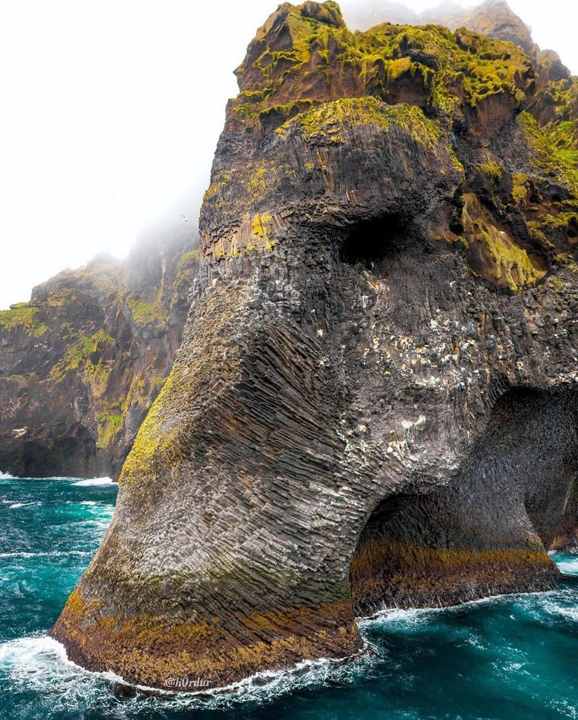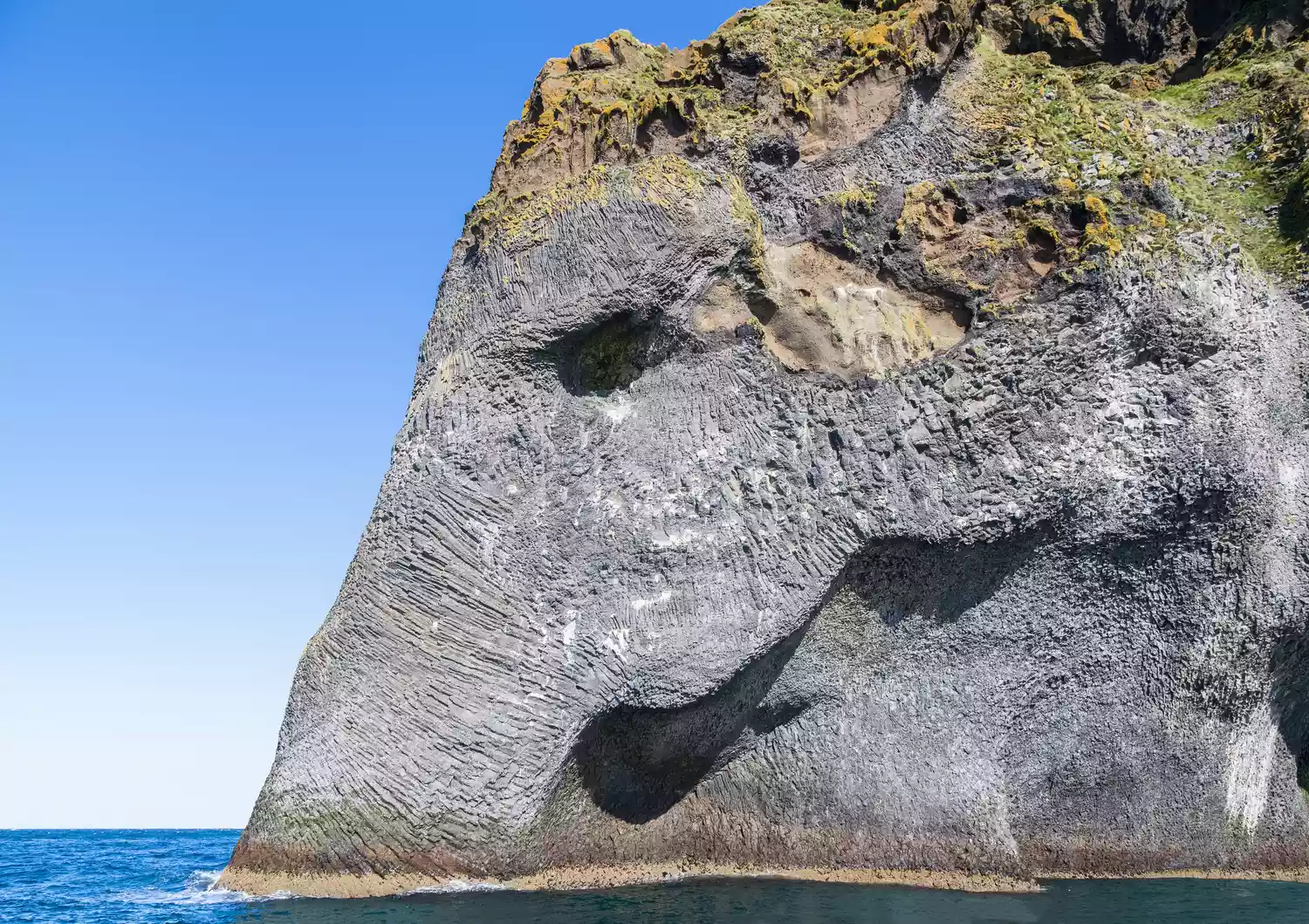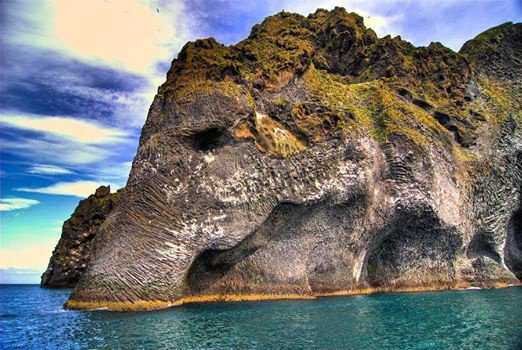
Elephant Rock is located along the volcano-formed coast of Heimaey, an island off the coast of Iceland. Diego Delso
Iceland is a land of volcanoes. Nowhere is this more evident than on the Vestmannaeyjar (Westman Islands), an archipelago off the southern coast of Iceland. Here, centuries of volcanic eruptions formed sea cliffs that appear almost fairy-tale-like. Among these eye-catching formations, one stands out: A portion of the volcano-formed coast on Heimaey (which means “Home Island”) looks almost exactly like the head of a large elephant sticking its trunk in the water.

The rock is elephantine enough that some people think that it must have been shaped with human intervention. That is not the case, however. The elephant’s realistic appearance is, at least partially, due to the fact that the cliff consists of basalt rock. The rock gives the figure “skin” that looks wrinkled and grayish, just like a real elephant.
A volcanic past
The most common hypothesis is that the elephant and other rock formations on Heimaey came from the Eldfell Volcano, which has erupted many times and continues to be active in the modern era. In 1973, an eruption caused significant damage to the island, and the harbor area was only saved by a dramatic cooling operation that solidified the advancing lava with ocean water before it reached the coast.
Heimaey is the largest land mass in Vestmannaeyjar, and it’s the only island in the chain with a permanent human population. It has an airport and one of Iceland’s most celebrated golf courses. The dramatic landscapes and easy access (the island is only four nautical miles from the mainland and is easy to reach via ferry) make it a popular destination for tourists.
4,000 people, lots of whales and millions of puffins

Despite the strong resemblance to an elephant, some people actually see something different when they look at the rock formation. They see the mythical character Cthulhu, a sea monster with tentacles on his face like a squid or octopus. Fantasy writer H.P. Lovecraft featured this beast in short stories for pulp magazines in the 1920s. Whether you see an pachyderm or a fictional monster, the realistic appearance of this rock formation makes it stand out even among the other examples of Mother Nature’s brilliance on the Westman Islands.
Though the rock does draw curious sightseers, it is only one of many attractions on Heimaey. You may see orcas in the water. Keiko, the orca who starred in the popular 1990s film franchise Free Willy, was actually released in the waters around Heimaey, but sadly failed to adapt and eventually had to be relocated. Tours that pass Elephant Rock cruise the coastal waters looking for marine mammals such as dolphins, orcas and other whale species.

Heimaey’s biggest claim to fame is actually neither the whales nor the elephant. The island is home to 4,000 people and the world’s largest population of puffins. These birds with their colorful, cartoon-like heads are the subject of an annual festival. During the summer, visitors shift their focus to the flocks of birds.
Some islanders still practice puffin hunting on the coastal cliffs, while others rescue the birds after they land in the island’s main town. The puffins get confused by the lights of the village and land thinking it is some sort of reflection in the ocean. Instead of adding them to the menu, young locals catch the lost birds and release them back into the sea (some enterprising townsfolk even charge tourists to do the releasing). Children’s author Bruce McMillan wrote a book called “Nights of the Pufflings” that celebrates the “catch and release” of the birds. (Pufflings are baby puffins).

Another popular pastime for tourists involves hiking up the Eldfell Volcano. The summit is just over 600 feet above sea level, so the mountain is accessible even to casual hikers. The island has well-marked trails, and you can even cross a lava field that covered houses in 1973 (the residents escaped, however). Locals have put markers so that visitors know when they are walking on top of a former settlement.